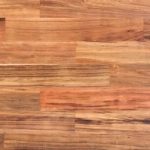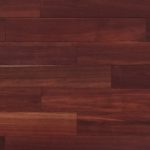by hbirch | Feb 1, 2014 | Wood
Wood flooring adds value to your home and is an investment, not an expense. Look at the real estate ads and count the number of times hardwood flooring is mentioned as a selling point. Now compare that to carpet or laminate. Carpet and plastic laminate are disposable floors, whereas wood flooring lasts for centuries if properly maintained, and can be returned to brand new condition. Wood flooring does not harbor allergens like animal dander, fleas, ticks, mites, or hold dirt like carpet. After a few years, nearly half the weight of carpet is accumulated trapped dirt.
Wood is a naturally renewable and biodegradable material, and is probably the only material in your home that satisfies those criteria. We also think it is more beautiful and individual than any other flooring material (more…)
by hbirch | Feb 1, 2014 | Wood
Job-site applied oil or water based polyurethanes require sanding off old finish and reapplying a new finish on unfinished an unfinished wood surface. Some of the wood surface will be sanded off as well. Factory applied finishes are compatible with the common water-based acrylic polyurethanes now widely used in favor of oil- based finishes. So a re-coating no longer requires the factory-applied finish to be removed, but merely abraded sufficiently for the new finish to adhere. This is much less of a mess than a full sanding, and does not remove any wood from the surface of the flooring, unless you’re dealing with dents.
There are two things that accumulate on a wood floor after years of use. (more…)
by hbirch | Jan 31, 2014 | Wood
Different woods have different degrees of hardness and density which will affect how they look over time. Eastern White Pine, the softest wood used for flooring, has in many cases withstood over 200 years of use and abuse. You’ll never “walk through” a wood floor.
Hardness and response to moisture are individual to each species, and these properties are important considerations when choosing a wood floor.
The hardness of wood is measured scientifically by the “Janka” test. This test measures the pressure it takes to sink a .444 inch steel ball one half its diameter into the surface of the wood. A higher number denotes a harder wood. Woods that are naturally harder than others will show less dents and evidence of traffic, but this relative standard is mostly for cosmetic reasons as all wood floors will last hundreds of years before they are worn through.
by hbirch | Jan 31, 2014 | Wood
-

-
Curupay before sunlight exposure.
-

-
Curupay after.
All wood exposed to sunlight changes color over time. In furniture, this acquired color is called “patina” and is desirable. Anything organic exposed to the sun changes color, including you and me. (more…)
by hbirch | Jan 31, 2014 | Wood
There is no single answer for whether to choose pre-finished or un-finished flooring. In this article we’ll get into details about how each is produced and the advantages of each. But for those who are looking for a quick answer, here’s a summary.
Advantages of pre-finished flooring include:
- Faster and cleaner installation, since no sanding is required at the job-site.
- Often comes with a warranty on the finish.
- Lower labor costs can lead to an overall lower cost depending on your situation.
- Factory-applied finishes are generally more durable and longer-lasting than those that can eb applied at a job-site.
Advantages of unfinished flooring include:
- A completely-smooth surface, since sanding is done after installation. (Pre-finished floors usually have a microbevel).
- A wide variety of finishes and staining are possible.
- If penetrating oil is used as a finish then partial refinishing becomes possible.
- Longer plank-lengths are available, as well as custom milling.
Which should you choose then, let’s dig in a little deeper. (more…)


